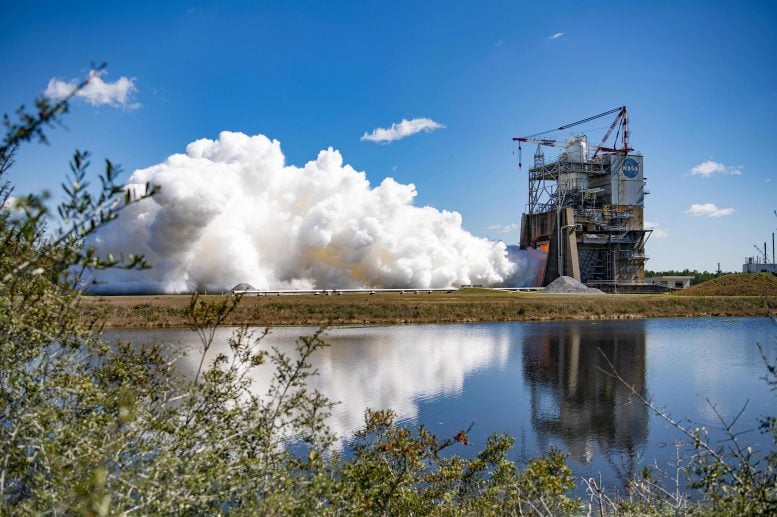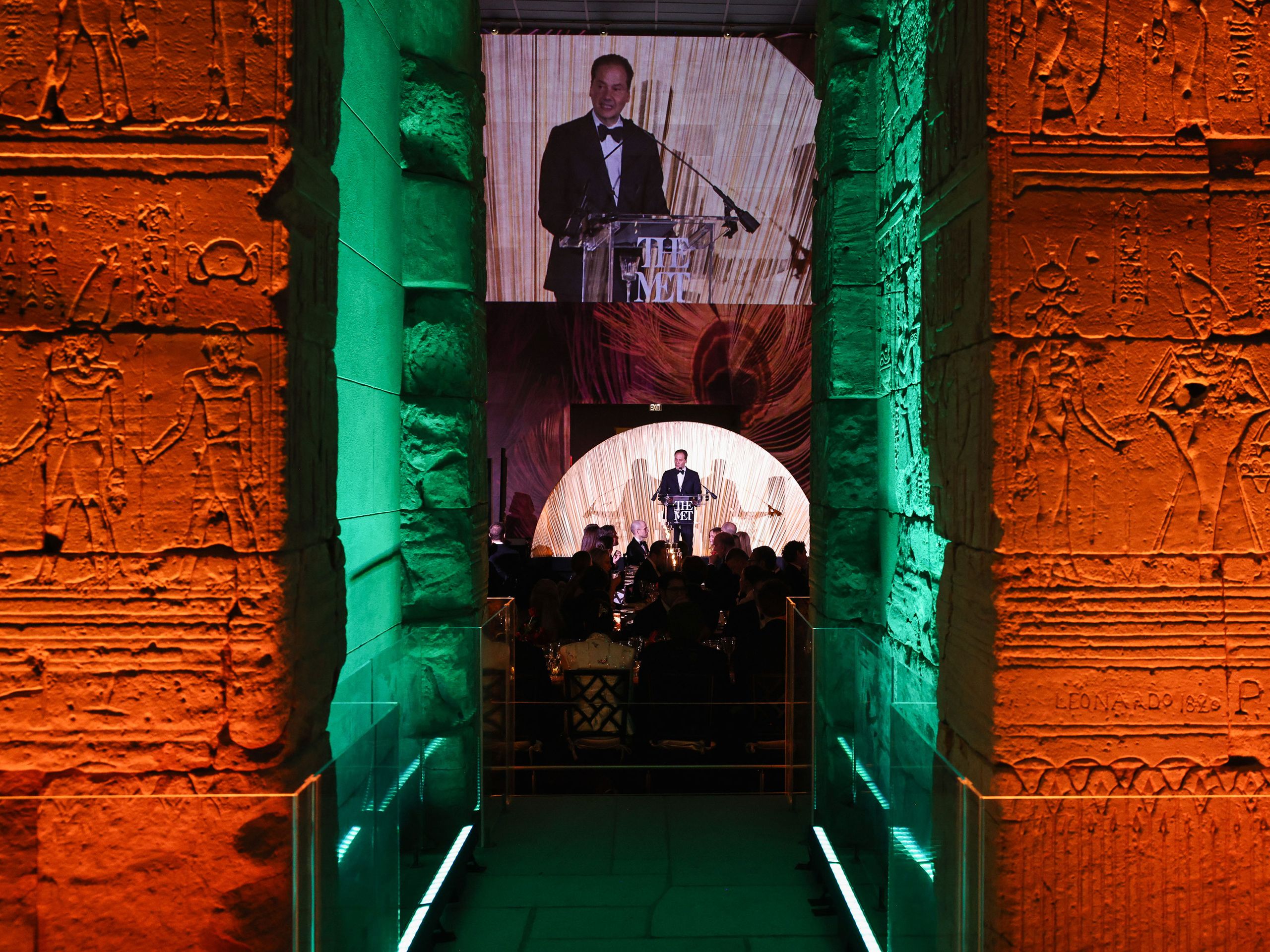NASA Enhances SLS Mega Rocket for Future Moon Missions

The certification testing for the production of new RS-25 engines, which will power the SLS (Space Launch System) rocket, is currently in progress at NASA’s Stennis Space Center near Bay St. Louis, Mississippi. Starting with the Artemis V mission, these engines will be part of Block 1B, also housing new-production RS-25 core stage engines that will operate at 111% of their rated power - a step up from the Block 1 RS-25 engines that operate at 109%. This enhancement will provide almost an additional 2,000 pounds of payload to lunar missions. Credit: NASA/Danny Nowlin
With the introduction of the Block 1B upgrade, NASA's Space Launch System is growing in strength and capability. This upgrade will include a more potent second stage and a cargo adapter, designed to support the upcoming Artemis IV mission. Manufacturing and testing procedures are currently in motion, aiming to increase the rocket’s payload capacity and facilitate more regular lunar missions.
In anticipation of the first manned Artemis missions, NASA is making preparations to construct, test, and assemble the next evolution of the SLS rocket. The more powerful variation of SLS, known as Block 1B, is designed to transport a crew and substantial hardware pieces to the Moon in a single launch, with its debut set for the Artemis IV mission.
Johh Honeycutt, SLS Program manager, states that NASA’s Space Launch System was designed from the onset to evolve into more powerful crew and cargo configurations, providing a flexible platform for further solar system exploration. The evolutionary changes to the SLS engines, boosters, and upper stage of the SLS rocket build upon the successes of the initial Block 1 design.
Early-stage manufacturing is already taking place at NASA’s Michoud Assembly Facility in New Orleans, while preparations for testing the upgraded upper stage are happening at Stennis Space Center in Bay St. Louis, Mississippi.
While retaining the same basic core stage and solid rocket booster design, Block 1B introduces substantial evolutionary changes to enhance the capabilities of NASA’s workhorse rocket. With the introduction of a more powerful second stage and a large cargo adapter, future Artemis missions will benefit from extended possibilities.
James Burnum, deputy manager of the NASA Block 1B Development Office, explains that the Space Launch System Block 1B rocket will serve as the primary transport system for astronauts for lunar missions in the years to come. Building on the SLS Block 1 design, NASA aims to provide safe, reliable transportation, capable of carrying heavier hardware for lunar missions in a single launch.
The Space Launch System (SLS) rocket is engineered to deliver propulsion in stages, enabling NASA’s Orion spacecraft and heavy cargo to reach the Moon for the Artemis lunar missions. After launch, the upper stage provides the additional propulsion required to establish an exact trajectory. Despite the core stage design remaining consistent, each Artemis mission will feature a selected upper stage to meet mission-specific goals. Credit: NASA/Kevin O’Brien
The interim cryogenic propulsion stage (ICPS), which has propelled the first three Artemis missions, will be replaced by a more potent, four-engine stage called the exploration upper stage (EUS). A variety of changes will be made, including a modification to the battery, allowing the EUS to support the first eight hours of the mission compared to the current two hours with ICPS. Newly designed hardware and software will cater to different performance and environmental demands.
The rocket will also feature a universal stage adapter linking the rocket to the Orion spacecraft. This adapter provides over 10,000 cubic feet of storage space for large components like modules for NASA’s future Gateway outpost, set to orbit the Moon and support crew members between surface missions and provide unique opportunities for lunar scientific research.
Technicians at NASA’s Michoud Assembly Facility in New Orleans on Feb. 22 prepare elements that will form part of the midbody for the exploration upper stage. The midbody struts, or V-struts, will create the cage-like outer structure of the midbody that will connect the upper stage’s large liquid hydrogen tank to the smaller liquid oxygen tank. Manufacturing flight and test hardware for the future upper stage is a collaborative effort between NASA and Boeing, the lead contractor for EUS and the SLS core stage. Credit: NASA
Together, those upgrades will increase the payload capability for SLS from 59,000 pounds (27 metric tons) to approximately 84,000 pounds (38 metric tons). The four RL10 engines that will be used during the exploration upper stage green run test series at Stennis are complete, and work on the Artemis IV core stage is in progress at nearby Michoud.
The evolved design also gives astronaut explorers more launch opportunities on a path to intercept the Moon. With four times the engines and almost four times the propellant and thrust of ICPS, the EUS also enables two daily launch opportunities compared to Block 1’s more limited lunar launch availability.
Among other capabilities, both astronauts and ground teams will be able to communicate with the in-space stage and safely control it while using Orion’s docking system to extract components destined for Gateway from the stage adapter.
NASA is working to land the first woman, first person of color, and its first international partner astronaut on the Moon under Artemis. SLS is part of NASA’s backbone for deep space exploration, along with Orion and the Gateway in orbit around the Moon and commercial human landing systems, next-generation spacesuits, and rovers on the lunar surface. SLS is the only rocket that can send Orion, astronauts, and supplies to the Moon in a single launch.




